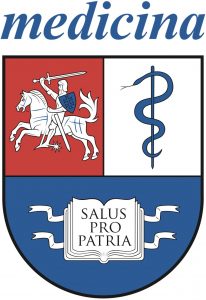Publications

The Effect of Hippotherapy Simulator-Assisted Therapy on Motor and Functional Outcomes in Children with Cerebral Palsy
Authors: Canan Gunay Yazici 1, Fatih Ozden 2, Osman Coban 3, Devrim Tarakci 4, Onur Aydogdu 1, Zubeyir Sari 1
Affiliations:
- Department of Physiotherapy and Rehabilitation, Faculty of Health Sciences, Marmara University, Istanbul 34854, Turkiye
- Department of Health Care Services, Koycegiz Vocational School of Health Services, Mugla Sitki Kocman University, Mugla 48800, Turkiye
- Department of Physiotherapy and Rehabilitation, Faculty of Health Sciences, Istanbul Uskudar University, Istanbul 34662, Turkiye
- Department of Physiotherapy and Rehabilitation, Faculty of Health Sciences, Istanbul Medipol University, Istanbul 34815, Turkiye
Journal: Medicina - October 2025, Volume 61, Issue 10, Article no. 1811 (DOI: 10.3390/medicina61101811)
-
Field & Applications:
- Medical
- Treatment evaluation
- Neurology
- Pediatrics
- Physiotherapy
- Musculoskeletal rehabilitation
Background and Objectives: Horse riding simulators (HRS) provide rhythmic, repetitive, and multidirectional movements analogous to horseback riding, which may facilitate postural control, balance, and functional abilities in children with cerebral palsy (CP). This study aimed to investigate the effects of the HRS application on the muscle tone of the lower extremity, gross motor function, trunk postural control, balance, gait functions, and functional independence in children with CP.
Materials and Methods: A quasi-experimental study included 30 children with cerebral palsy (17 hemiparetic, 13 diparetic; mean age, 9.3 ± 3.2 years). All participants received Neurodevelopmental Therapy (NDT) for eight weeks, followed by eight weeks of HRS plus NDT, in a sequential design. Outcomes included the Modified Ashworth Scale (MAS), MyotonPRO®, Gross Motor Function Measures (GMFM)-88, Pedalo® Sensamove Balance Test (Pedalo® SBT), Pediatric Balance Scale (PBS), Trunk Impairment Scale (TIS), gait analysis parameters, and Functional Independence Measure (WeeFIM). Assessments were made at baseline, the 8th, and the 16th week.
Results: At week 16, after incorporating HRS, all MAS parameters demonstrated greater improvements compared to those achieved during the first eight weeks of NDT alone (ES: 0.728–0.931, p < 0.05). MyotonPRO® measurements showed a significant reduction in gastrocnemius stiffness (ES = 0.672, p < 0.05) in hemiparetic children and decreases in hip adductor (ES: 0.649, p < 0.05) and gastrocnemius-soleus (ES: 0.766–0.865, p < 0.05) stiffness from week 8 to 16 in diparetic children following HRS intervention. Total scores on the GMFM-88, WeeFIM, TIS, and PBS improved significantly, with large effect sizes observed both from baseline to week 16 and from week 8 to 16 (ES: 0.771–0.886, p < 0.05). Additionally, Pedalo® SBT scores increased following HRS intervention from baseline to week 16 (ES = 0.599–0.602, p < 0.05).
Conclusions: HRS integrated with conventional NDT may improve muscle tone, motor function, balance, gait, and functional independence in children with cerebral palsy, representing a valuable adjunct to standard rehabilitation. These findings provide the first evidence that simulator-assisted interventions may benefit daily activities in children with cerebral palsy.
Keywords: balance, cerebral palsy, hippotherapy, gait, muscle spasticity
This present study showed that hippotherapy simulator-assisted applications have beneficial effects on lower extremity spasticity, gross motor functions, trunk and postural control in sitting position, balance, gait function, and functional independence in ADL children with CP. This study provides novel evidence that simulator-assisted interventions can improve activities of daily living, as reflected in WeeFIM scores, which have rarely been reported in previous studies. In light of all these findings, the hippotherapy simulator can be used together with NDT as an alternative therapy method for the rehabilitation of children with CP. The provision of this kind of complementary therapy added more pleasure to the rehabilitation of children with CP. It is also safe and cost-effective in a clinical setup when the real horse is unavailable. This study provides baseline data for future research and provides valuable clinical insights for physiotherapists using a hippotherapy simulator in this patient population. Future multicenter randomized controlled trials, with longer follow-up periods and the inclusion of broader CP subtypes, are warranted to confirm these results and explore their cost-effectiveness.


